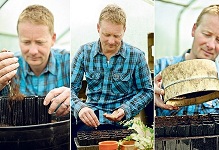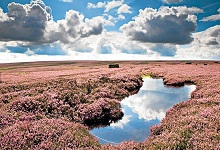Source: telegraph.co.uk – Do we need to use peat?

Our addiction to peat is seriously damaging the health of the environment, says Mark Diacono.
Peat is extraordinarily generous. It gives us beautiful landscapes that support a rich and rare biodiversity, it helps lessen flood risk and its cold, wet subterranean conditions preserve valuable archaeology. It is essentially a young fossil fuel, storing around double the carbon that is stored in all the world’s forests, and therefore has a vital role to play in regulating our climate.
Peat is also a very consistent medium for growing plants, with the capacity to hold on to water and dissolved nutrients to just the right degree, letting go of excess when required.
Having developed over thousands of years where acidic or anaerobic conditions prevent plants and fungi from decaying completely, all but six per cent of our lowland peat has been removed in just a few short decades, yet each year we are digging up 106 million cubic feet of what’s left for use in horticulture (Defra, 2010).

Surprisingly it is domestic gardeners, you and I, who are driving this. We consume two thirds of it, mostly in the form of multi-purpose compost. As a result, important landscapes, habitats and archaeological sites are being destroyed and more than 630,000 tons of carbon dioxide are released into the atmosphere each year, the equivalent greenhouse-gas emissions of more than 300,000 cars (RSPB, 2011).
As our resource has dwindled, we now import 60 per cent of what we use from Ireland and eight per cent from Baltic countries – with similar impacts on their biodiversity, landscape and archaeology (Defra, 2010).





